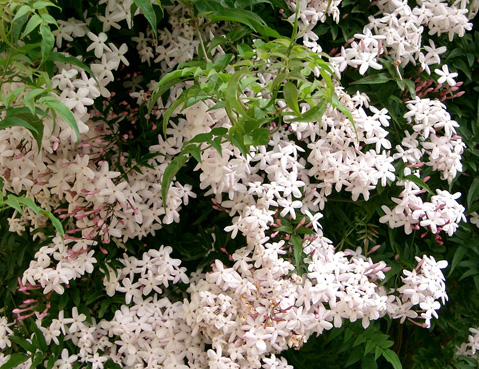Gardening: Prune Don’t Ruin
Don’t Go Crazy with the Shears Unless You Are Into Topiary

For as long as I’ve been a gardener in Santa Barbara, there have been two landscaping practices that I’ve never really understood. Number one, which I will address at another time: Why do folks rake up all of the mulch — be it leaf litter, compost, or other organic material — from their garden beds instead of adding it to their garden beds? And two: For what reason do they shear all kinds of non-hedge-type plants and even vines into dense and unrecognizable blobs of foliage? It’s no secret how strongly I feel about this issue.
Sheared hedges certainly have a place in formal gardens, or even informal ones, if a screen or barrier is needed for privacy. If topiary is your thing and you want a Eugenia giraffe, privet grizzly bear, or boxwood tortoise grazing through your garden, then by all means whip out those clippers.
But by continually shearing your garden shrubs and, in some cases, even trees into squares, balls, and triangles, you lose the natural shape and integrity of the plants to say nothing of the blooms if the flower buds are relentlessly lopped off with hedge clippers.
Another consequence of all this wholesale snipping and clipping is that vines will no longer “vine” but will instead become amorphous and hedge-like, and, again, you’ll be lucky if you ever get to see a flower on the thing. There are exceptions, as a few vines such as pink jasmine (Jasminum polyanthum) do benefit from a radical pruning once in a while to keep them from becoming invasive and tangled.
You’re probably thinking, “Okay, Mr. Smarty GreenPants, how do I keep my garden from becoming a jungle? And what are my gardeners supposed to do every week if they don’t indiscriminately chop things down?”
For existing garden plants, consider doing nothing for a while. Where appropriate, allow plants to reclaim their natural shapes and growing habits. Then, hand-shape and thoughtfully prune them back to resemble what they were supposed to look like if left to grow on their own.
In the future, consider choosing plants that max out at the size of the space they are intended for. That way, when they’re fully grown, they may only need an occasional thinning in order to rejuvenate them. Hibiscus, oleander, rhaphiolepis, and some compact types of pittosporums are examples.
Pick out plants that are slow growing such as sasanqua and Japanese camellias, so eventually if they need some selective and creative hand-pruning, they will slowly add growth back and will not need maintenance too often.
Lastly, thin vines naturally by selectively cutting out entire shoots and older, woodier stems. This will not only keep your vine, well, vining but will also guarantee that it will bloom, as well.



